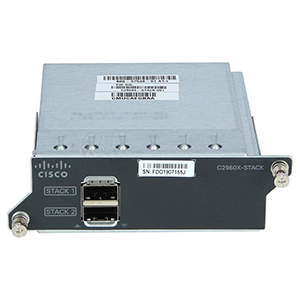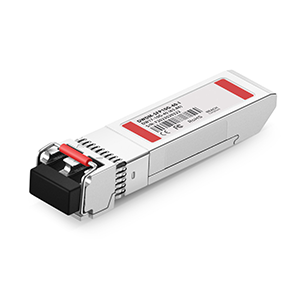Routers play a key role in the network. This article will focus on the concept and function of wide area network (WAN) routers. We will first explain the role of the router and explain its position in the network. Next, we will describe the characteristics and main functions of local area network (LAN) routers, including gateways, DHCP, and firewalls.
Then, we will define the characteristics of WAN routers and explain their main functions, such as providing WAN interfaces, executing routing protocols, and supporting advanced functions such as VPN. Finally, we will explain the application of WAN routers in scenarios such as connecting corporate headquarters and branch offices and accessing Internet service providers.
Basic definition of routers
A router is a network device used to connect different networks and forward data packets. It manages network traffic, connects LANs and WANs by determining the best path to transmit data, and ensures effective communication between devices and Internet access.
The role of a router:
A router is a network device whose main functions include:
(1) Connecting different network segments or networks:
- A router can interconnect different networks, such as connecting a local area network (LAN) with a wide area network (WAN).
- It can connect different network subnets to achieve cross-segment communication.
(2) Forwarding and routing of data packets:
- A router can forward data packets from one network to another based on the target IP address.
- It uses routing algorithms to determine the best forwarding path for data packets and achieve data communication between networks.
The role of routers in the network:
The router plays an important role in the network, and its role is mainly reflected in the following two aspects:
(1) Ensure the connectivity between networks:
- The router connects different networks together and is a key device for achieving network interconnection.
- It ensures data transmission and resource sharing between networks.
(2) Improve the efficiency of network communication:
- The router selects the best forwarding path according to the routing algorithm and optimizes the flow of network data.
- It reduces network congestion and improves the speed and reliability of network communication.
In short, the router is a key interconnection device in the network. By connecting different networks and forwarding data packets, it ensures the connectivity and communication efficiency between networks and plays an indispensable role in modern networks.
Local Area Network (LAN) Router
A LAN router is used to connect multiple devices within a LAN to forward data packets and manage network traffic. It provides network address translation (NAT) functions, assigns IP addresses, and connects to the Internet or other networks to ensure internal communication and resource sharing.
Features of LAN Routers:
A LAN router is a routing device deployed within a LAN and has the following features:
(1) Connecting devices within a LAN:
- A LAN router interconnects various devices within a LAN (such as computers, printers, etc.).
- It is responsible for managing and controlling network communications within the LAN.
(2) Realizing data forwarding within the LAN:
- A LAN router can identify and forward data packets between devices within the LAN.
- It forwards data packets from the source device to the destination device based on the IP address.
Main functions of LAN routers:
LAN routers usually have the following important functions:
(1) Gateway function, providing Internet access:
- As the default gateway of the LAN, the LAN router provides Internet access for internal devices.
- It connects the LAN to the wide area network (such as the Internet).
(2) DHCP service, automatically assigning IP addresses:
- LAN routers can provide DHCP services to automatically assign IP addresses to devices in the LAN.
- This simplifies user configuration and improves network management efficiency.
(3) Firewall function, enhancing network security:
- LAN routers have built-in firewalls that can filter and block illegal access and protect the security of the LAN.
- It can configure access control rules to enhance the network security of the LAN.
In short, as a key device in the LAN, the LAN router plays an important role in building and managing the LAN by connecting LAN internal devices, providing Internet access, allocating IP addresses, and enhancing security.
Wide Area Network (WAN) Router
A wide area network (WAN) router is used to connect the WAN and the LAN, and handle cross-regional data transmission and traffic management. It is responsible for forwarding data from the internal network to the external network or the Internet, ensuring the efficiency and stability of remote communication, access, and data exchange.
Features of WAN routers:
A wide area network (WAN) router is a routing device deployed in a WAN or Internet environment and has the following features:
(1) Connecting to a WAN or Internet:
- A WAN router is responsible for connecting an enterprise network or branch office to a WAN or Internet.
- It provides a WAN interface (such as dedicated line, Internet, etc.) for WAN connection.
(2) Implementing data routing within the WAN:
- A WAN router can identify and forward data packets across the WAN.
- It selects the best path based on the routing protocol to achieve end-to-end data transmission within the WAN.
Main functions of WAN routers:
WAN routers usually have the following important functions:
(1) Provide WAN interface to connect WAN links:
- WAN routers have dedicated WAN interfaces to connect WAN dedicated lines, Internet and other links.
- It ensures the connectivity between the enterprise network and the WAN or public network.
(2) Execute routing protocols to achieve routing between WANs:
- WAN routers run dynamic routing protocols (such as OSPF, BGP, etc.) to learn and maintain routing information within the WAN.
- This ensures that data packets across the WAN can be forwarded along the best path.
(3) Support for advanced features such as VPN:
- WAN routers usually have advanced features such as VPN, firewall, QoS, etc.
- These features help enhance the security, performance, and flexibility of the WAN.
In short, as a key device for WAN, WAN routers provide WAN connection interfaces, execute dynamic routing protocols, and support advanced features such as VPN, playing an indispensable role in building enterprise-level WANs.
Application scenarios of WAN routers
WAN routers are widely used in enterprise networks, data centers, and branch offices to connect internal LANs with the Internet or other remote networks. They are used to achieve remote access, data transmission, network optimization, and multi-location communications to ensure network connectivity and reliability.
Connecting corporate headquarters and branches:
In corporate network environments, WAN routers are often used to connect headquarters and dispersed branches:
(1) Using dedicated lines or VPN connections:
- Enterprises can use dedicated lines or Virtual Private Network (VPN) technology to connect the WAN routers of headquarters and branches.
- This method can achieve secure and high-speed interconnection between dispersed networks.
(2) Realizing interconnection between dispersed networks:
- WAN routers connect various network points to form a unified enterprise-level wide area network.
- Employees can access shared applications and resources in any branch, improving work efficiency.
Access to Internet Service Providers:
WAN routers can also be used to connect to Internet Service Providers (ISPs) to achieve public network access to corporate networks:
(1) Access through the WAN link provided by the ISP:
- Enterprise WAN routers access the Internet through dedicated lines or broadband links provided by ISPs.
- This method can provide enterprises with stable public network connections.
(2) Access to public network resources and Internet services:
- With the public network access of WAN routers, enterprise internal devices can access various resources and services on the Internet.
- This provides enterprises with a wealth of online applications and information sharing capabilities.
In short, WAN routers play a key role in enterprise networks, enabling the interconnection between headquarters and branches, while also providing connections to the Internet, meeting the needs of enterprises for WAN interconnection and public network access.
Summary
Reasonable deployment and configuration of WAN routers are the key to building an efficient and stable network. Our company has long focused on the research and development and application of network solutions and has rich practical experience. We provide powerful WAN router products that are widely used in various network scenarios such as enterprises, operators, and large institutions.
Our WAN routers use industry-leading technical solutions and have achieved excellent levels in WAN interface performance, routing protocol support, and security functions. At the same time, our engineering team will provide you with professional demand analysis and solution design services to ensure that the deployed WAN router solution can meet your actual needs to the greatest extent. Contact us now to learn more.
WAN Router FAQ
A WAN router is a device that connects a local area network (LAN) to a wide area network (WAN), such as the internet. It routes data between the local network and external networks, managing traffic and providing connectivity.
A WAN router connects a local network to an external network (like the internet), handling WAN traffic and routing it to and from the LAN. A LAN router typically manages internal network traffic and device connections within a local network.
A WAN router manages the connection between a local network and the internet, handles data traffic routing, provides network address translation (NAT), and often includes firewall and security features to protect the network.
To set up a WAN router, connect it to your modem using an Ethernet cable, then connect your local devices or network switch to the LAN ports on the router. Follow the router’s setup instructions to configure WAN settings, such as IP address and DNS.
Yes, most WAN routers support both wired and wireless connections. They provide Ethernet ports for wired connections and Wi-Fi for wireless connectivity, allowing devices to connect to the local network in various ways.
A modem connects to your ISP and provides internet access, while a WAN router connects to the modem and distributes the internet connection to multiple devices within a local network. Many modern devices combine both functions into a single unit.
A WAN router directs internet traffic between the local network and external networks by routing data packets. It uses NAT to manage IP address assignments, enabling multiple devices on a local network to share a single public IP address.
Key features to consider include the router’s speed and bandwidth capabilities, security features (such as firewalls and VPN support), the number of LAN and WAN ports, wireless standards (e.g., Wi-Fi 6), and ease of setup and management.
Yes, WAN routers often include built-in security features such as firewalls, intrusion detection systems, and VPN support to protect the network from external threats and unauthorized access.
If your WAN router is not connecting to the internet, check the physical connections (cables), ensure the modem is functioning properly, restart both the router and modem, and verify your router’s configuration settings. If the issue persists, contact your ISP for further assistance.




